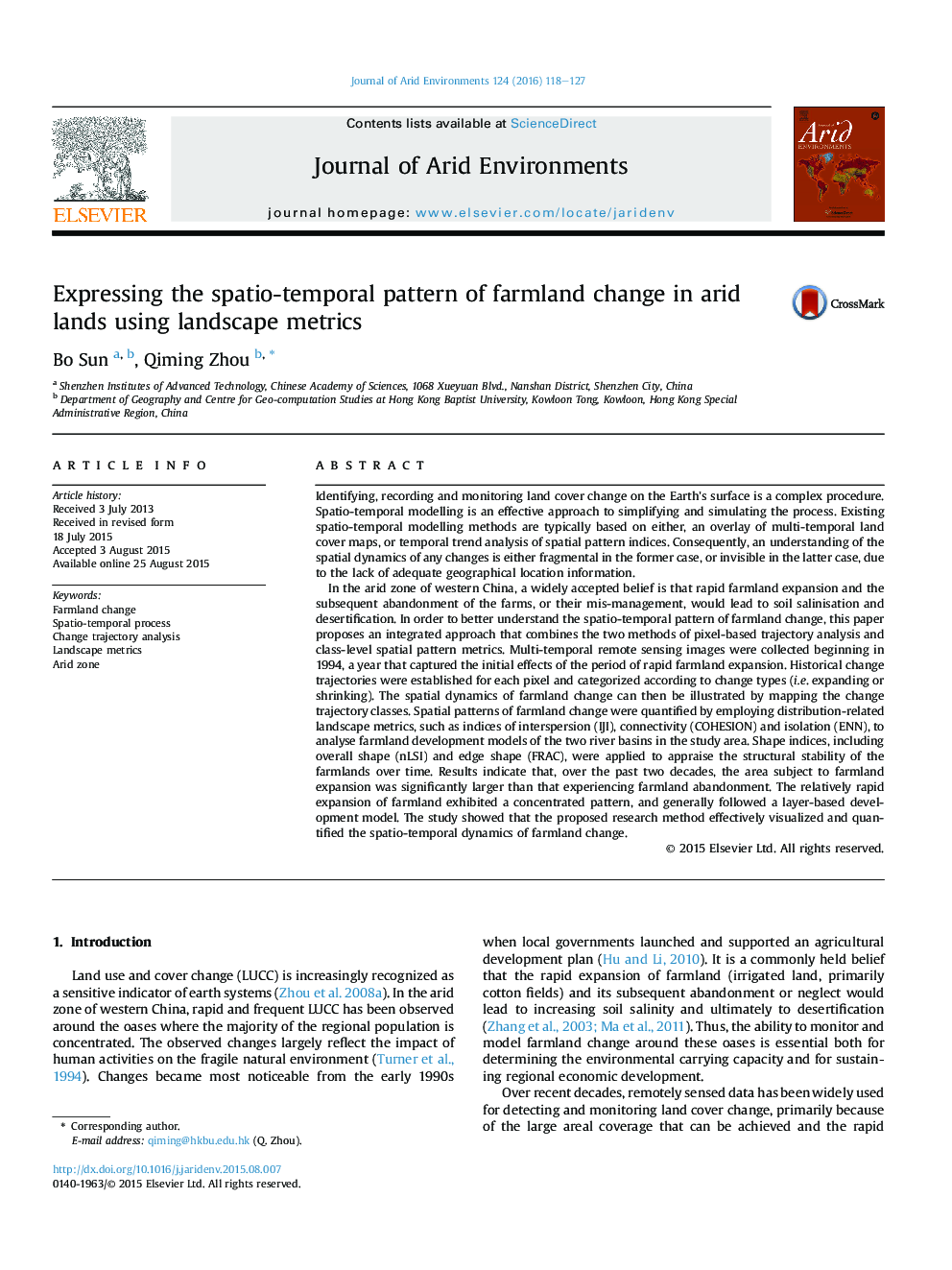| کد مقاله | کد نشریه | سال انتشار | مقاله انگلیسی | نسخه تمام متن |
|---|---|---|---|---|
| 6303360 | 1618235 | 2016 | 10 صفحه PDF | دانلود رایگان |
- We represent the spatial dynamics of farmland change in the arid zone of western China.
- We identify farmland expansion model by quantitative metrics.
- A concentrated pattern of farmland development is observed.
- Farmland development tends to follow a layer-based expansion model at the river-basin-level scale.
- A set of metrics allows a better understanding of the spatio-temporal pattern of farmland change at different aspects.
Identifying, recording and monitoring land cover change on the Earth's surface is a complex procedure. Spatio-temporal modelling is an effective approach to simplifying and simulating the process. Existing spatio-temporal modelling methods are typically based on either, an overlay of multi-temporal land cover maps, or temporal trend analysis of spatial pattern indices. Consequently, an understanding of the spatial dynamics of any changes is either fragmental in the former case, or invisible in the latter case, due to the lack of adequate geographical location information.In the arid zone of western China, a widely accepted belief is that rapid farmland expansion and the subsequent abandonment of the farms, or their mis-management, would lead to soil salinisation and desertification. In order to better understand the spatio-temporal pattern of farmland change, this paper proposes an integrated approach that combines the two methods of pixel-based trajectory analysis and class-level spatial pattern metrics. Multi-temporal remote sensing images were collected beginning in 1994, a year that captured the initial effects of the period of rapid farmland expansion. Historical change trajectories were established for each pixel and categorized according to change types (i.e. expanding or shrinking). The spatial dynamics of farmland change can then be illustrated by mapping the change trajectory classes. Spatial patterns of farmland change were quantified by employing distribution-related landscape metrics, such as indices of interspersion (IJI), connectivity (COHESION) and isolation (ENN), to analyse farmland development models of the two river basins in the study area. Shape indices, including overall shape (nLSI) and edge shape (FRAC), were applied to appraise the structural stability of the farmlands over time. Results indicate that, over the past two decades, the area subject to farmland expansion was significantly larger than that experiencing farmland abandonment. The relatively rapid expansion of farmland exhibited a concentrated pattern, and generally followed a layer-based development model. The study showed that the proposed research method effectively visualized and quantified the spatio-temporal dynamics of farmland change.
Journal: Journal of Arid Environments - Volume 124, January 2016, Pages 118-127
